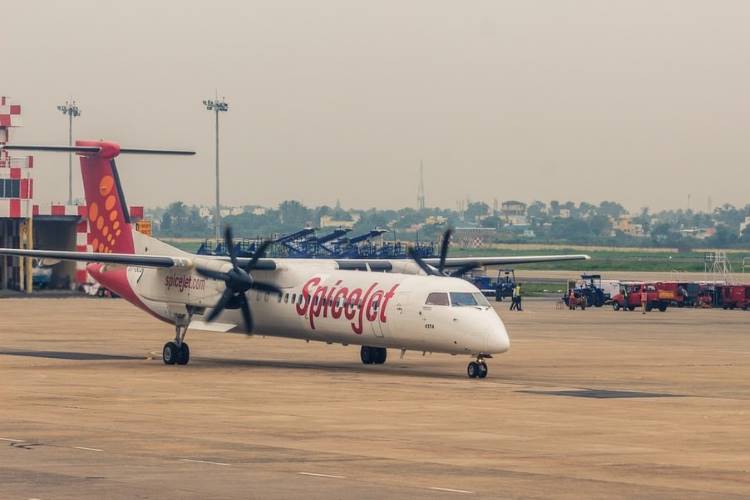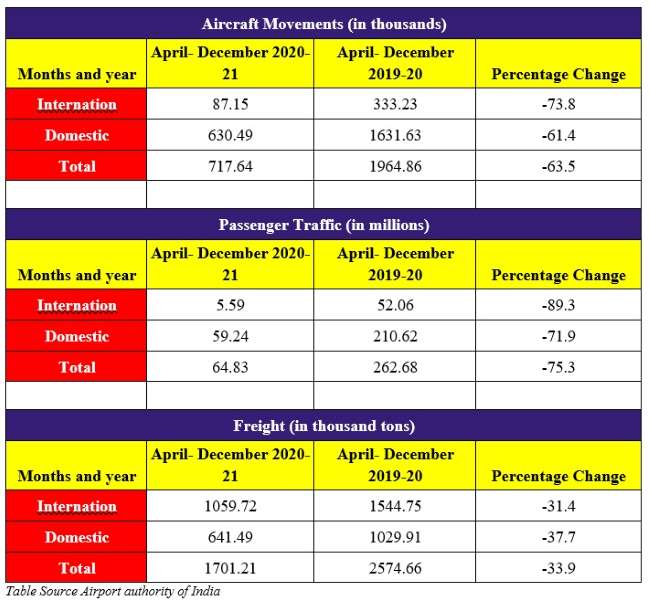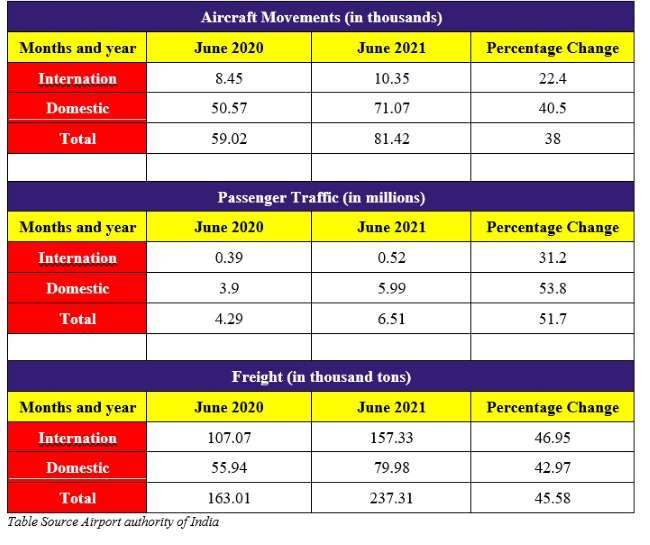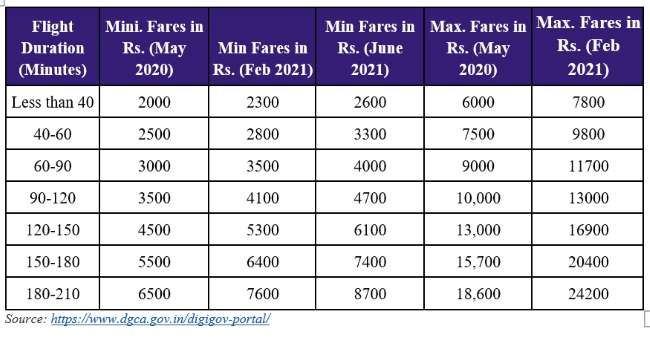
The aviation industry is one of the hardest hit sectors of the economy. Air travel restrictions that came into effect in March 2020 continues with some changes, taking the steam of sectors such as aviation, hospitality and tourism. The aviation industry was already struggling when the pandemic struck. This article focuses on the impact of Covid-19 on the industry, the challenges posed by the pandemic, steps taken by the government, and the opportunities once the restrictions are withdrawn.
India was among the world’s fastest growing economies before the pandemic crisis. The second most populous country was the fifth largest economy with a GDP of $2.87 trillion. It had a thriving economy that fed the aviation industry. According to the data by Statista from FY2014 to FY2019, there was a continuous increase in the number of domestic and international passengers, but there was a downtrend from FY2019 t due to lockdown measures.
The flights were resumed on May 24 2020, but only a handful of people used them since there was no need for transportation due to the near complete lockdown in the economy. This was stressful for airlines that incurred a loss of Rs 16,000 crore and airports faced the loss of Rs 3,000 crore between April and December 2020.
READ I Covid-19 fiasco: Unfair to blame private hospitals, govt must plan for the vulnerable
The crisis in numbers
The number of domestic travellers crashed to 3 crore in April-December 2020, compared with 10.8 crores in 2019. While international air traffic fell to 55.9 lakh passengers in 2020, compared with 5.21 crore in 2019. International air travel is dependent on bilateral agreements, and India has air bubble agreements with 27 countries. From September 2020 till March 2021, there was a major decline in infections in India that led to the reopening of tourism and some other sectors.
The government allowed 60% of flights to operate, but the second wave of Covid-19 in March 2021 dashed the hopes of a revival in aviation, tourism and hospitality. This time there was no complete ban on flight operations, but the government allowed only 50% of flight operations during this time which was 80% in December 2020.
According to credit rating agency ICRA, domestic airlines might have incurred a loss of Rs 21,000 crore in FY21. The industry would require additional funding of Rs 37,000 crore from FY21 to FY23 to recover from the losses. The Airport Authority of India has reported a 92% fall in revenues from Rs 2,973 crore in April-June 2019, to Rs 239 crore in 2020. CAPA Centre for Aviation warns job loss to the tune of 30% in the aviation sector. The revenue of Indian carriers declined by 86%, with Air India reporting a 78% fall.
The revival of the aviation industry is dependent on other sectors such as airports, tourism and hospitality. People prefer airplanes since they are safer than trains and buses during the pandemic due to limited exposure. But this might change due to an increase in fares and with increasing vaccination coverage. Aviation experts say the industry will recover to post-Covid levels only by the end of FY23.
READ I Uncertain future: Can NFTs survive the Cryptocurrency Bill
Forecasts for aviation industry
Table 1 below shows that aircraft movements, passenger traffic and freight movement have decreased by 63.5, 75.3%, and 33.9%, respectively, at Indian airports from April-December 2019-20 to 2020-21.

Table 2 compares the percentage change in the same variables in June 2020 and June 2021. The trend seems positive, but the unlocking scenarios in these time periods were different. In June 2020, only 33% of flights operated while in June 2021, the figure was 50%. According to ICRA, domestic passenger traffic stood at 29-30 lakh in June 2021, compared with 19.8 lakh in May. This implies a sequential growth of 41-41%. The capacity deployment was approximately 46% higher at around 31,700 departures compared with 21,696 departures in June 2020. The average daily departures were 1,100 compared with 700 in June ’20.

Steps taken by govt for aviation industry
Due to the pandemic, the aviation industry was started in a calibrated manner, first 33% of operations were opened in May 20. In June it increased to 45%, and in September it was 60%. Operation of Regional Connectivity Scheme (RCS) – UDAN flights were allowed without restrictions.
- Air bubbles were established with 27 countries as regular international operations were suspended — this was a temporary measure executed by world governments.
- Private investment in existing and new Airports through the PPP route was promoted.
- Adequate care was taken to ensure that cargo terminals at all major airports were operational, whenever required.
- GST rate reduced to 5% for domestic Maintenance, Repair, and Overhaul (MRO) services.
- Encouraged Indian carriers to increase their share in international Air Cargo Traffic.
- Route rationalization in the Indian airspace in coordination with Indian Air Force for efficient airspace management, shorter routes, and reduced fuel burn.
- In September 2020, the government sanctioned Rs108 crore for Jagdalpur, Ambikapur, and Bilaspur airports in Chhattisgarh under the UDAN scheme for development.
- In the Union Budget 2021-22, the government expanded the scope of Krishi Udaan in convergence with operation Green Scheme, wherein air freight subsidy of 50% for agri-perishables would be provided to North-Eastern states and 4 Himalayan States/UTs.
- The government lowered the custom duty from 2.5% to 0% on components of parts, including engines, for manufacturing of aircraft by public sector units of the ministry of defence.
- In April ’20, the government introduced the Lifeline Udan flights to transport essential medical cargo to remote parts during the pandemic.
READ I UN Security Council: Demography, democracy in India’s favour
Fare restrictions
The government pushed the lower and upper fare limits twice. It issued fare limits for the first time in May 2020, and revised it in February 21. No specific reason was attributed for this, but it was stated that one major reason was the increase in aviation fuel prices which was 6% higher in 2021 compared with the previous year. This could also help airlines for speedy recovery after a disastrous 2020.
The fare caps can be termed as an extreme step to prevent airlines from charging exceptionally high fares, to avoid a price war, and to help airlines raise their revenues. The government has only allowed selling 20% of seats below the median price in 2021, which was 40% in May 2020. In Q2 of 2021 aviation ministry declared a third hike in fare bands. It was pushed from 13 to 16%, may be due to the second wave that put the airlines under stress. On February 28 2021, around 3.13 lakh air passengers travelled by aircraft. On May 25, domestic flights had only 39,000 passengers. From July 5, the government allowed 65% of flights to operate.

Turbulence ahead
The aviation sector is dependent on tourism and commercial activities that are subject to restrictions due to the pandemic. The pandemic is not a nightmare that will suddenly disappear. It is highly dependent on the emergence of variants and the speed of vaccination. In such an uncertain situation, airlines can minimize their losses rather than increase profit in the short term by adopting several strategies/models.
Recently, the India Brand Equity Foundation predicted that India is set to become the worlds’ third largest aviation market by 2024. The Indian government is planning to invest Rs 35,000 crore in the next four years in the aviation industry; it is also planning to invest $1.83 billion for the development of airport infrastructure by 2026. The National Air Cargo Policy predicts that Indian air cargo and logistics have the potential to be the most efficient by the end of 2030. The freight traffic has increased from 2.70 million tonne to 3.33 million tonne between 2016 and 2020, and is expected to reach 4.1 million tonne by 2023.
Despite the government’s support for the aviation industry, there are several gaps. All domestic airlines apart from Indigo demanded bailout packages from the government. Countries such as the UK, Canada, and the US have supported airlines through financial packages. The Covid-hit Indian carriers need $2.5 billion to keep flying, according to the CAPA Center for Aviation, Sydney.
Immediate cash support was the key demand of airlines during the lockdowns as they needed to pay their employees. However, due to severe financial constraints, airlines opted for layoffs and pay cuts. The government didn’t provide bailouts, but it did take supportive steps for the aviation sector. The future of the aviation industry depends on the pandemic. They are implementing several strategies to save the businesses on the basis of the current situation. A positive outcome of these efforts will be visible once the pandemic crisis subsides.
(Shiv Chhatrala is a student of economics and media studies at Christ University, Bangalore. He is currently interning with Policy Circle.)
References:
https://www.google.com/amp/s/wap.business-standard.com/article-amp/companies/indian-airlines-await-govt-bailout-as-other-countries-open-their-purses-120080300991_1.html
Indian airlines face risk of extinction as Modi govt refuses to rescue them
https://www.aerotime.aero/27602-india-aviation-prospects
